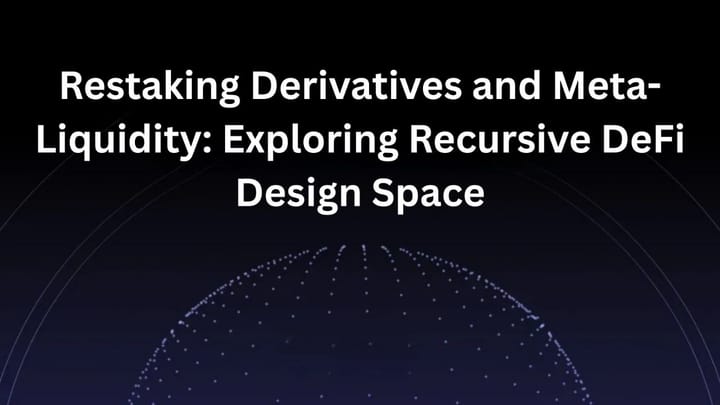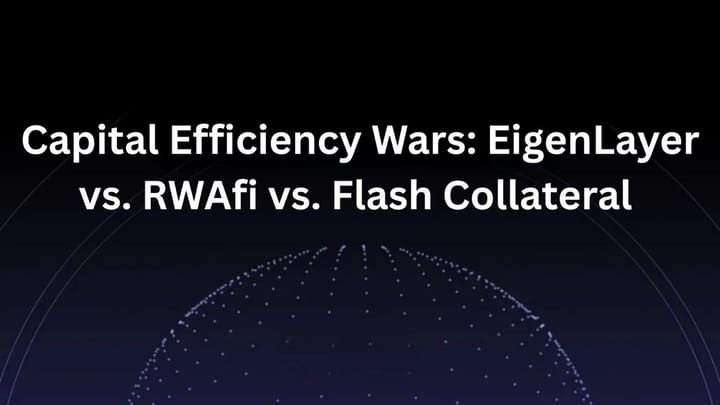TOKEN2049 Dubai: Emerging Innovations and Key Trends Shaping the Future of Web3

TOKEN2049 in Dubai once again became the center of attention for the Web3 world. This prestigious conference brought together innovators, developers, and investors to explore cutting-edge innovations and discuss the future direction of the Web3 ecosystem.
Over the course of two busy days, thousands of participants from over 100 countries gathered to witness and engage in discussions about the latest blockchain developments, ranging from modular blockchain architectures to the tokenization of real-world assets.
Web3: From Vision to Reality
Web3, once a distant vision of a more open and decentralized internet, is now closer to becoming a reality. At TOKEN2049 Dubai, it was clear how this vision has evolved into a tangible ecosystem that is being used in various sectors such as finance, identity, and even sustainability.
Key Innovations that Caught Attention
1. Modular Blockchain: Building Blocks for Better Scalability
One of the main innovations discussed was modular blockchain architecture. Instead of relying on a single chain to handle everything, developers now build with a modular approach, breaking down blockchain functions into separate layers that can be customized according to specific needs. Projects like Celestia and Avail were prominent examples, offering greater flexibility and scalability for future Web3 applications.
2. Zero-Knowledge Proofs (ZKP): Privacy and Scalability at Speed
Zero-Knowledge Proofs (ZKP) continue to be a crucial innovation for improving privacy while also reducing network load. This technology allows for more secure and efficient transactions, enabling developers to build private applications faster with tools like zkVM and RISC Zero.
3. Tokenizing Real-World Assets (RWA): Bridging the Gap Between Traditional and Digital
Blockchain is playing an increasingly significant role in the traditional financial world through the tokenization of real-world assets. Platforms like Ondo Finance and Centrifuge demonstrated how DeFi could be used to tokenize assets such as real estate and bonds, bringing the real world into the blockchain ecosystem.
Emerging Trends in Web3: Where Are We Heading?
1. Interoperability: Moving Toward an Omnichain Future
As more blockchains and rollups emerge, interoperability becomes an unavoidable topic. Protocols like LayerZero and Axelar are creating secure and decentralized bridges, allowing assets and data to move seamlessly between chains. The omnichain world is no longer a dream—it’s being built right now.
2. NFTs with Real Utility
NFTs are no longer just about digital collectibles or art. They are now being used as tickets, memberships, and even digital identities. Discussions at TOKEN2049 also focused on dynamic NFTs that can change based on user actions or conditions. Utility is the new hype.
3. DeFi 2.0: Safer and More Connected
The second wave of DeFi focuses on security, capital efficiency, and collaboration with traditional financial institutions. DeFi protocols are now adopting KYC/AML standards without compromising decentralization. Some are also targeting institutional investors through tokenized products that comply with regulations.
Metaverse, Digital Identity, and the Future of Web3
The metaverse is still evolving, but now with a bigger focus on the infrastructure that supports interoperability between the digital and physical worlds. Digital identity solutions like Polygon ID and Lens Protocol are key to enabling users to fully control their identity across virtual platforms.
Web3 gaming is also maturing. Games are no longer just about play-to-earn, but also play-and-own, allowing players to truly own the assets they earn in the game.
Regulation: A Challenge to Overcome
Regulation remains one of the biggest challenges facing Web3’s development. While large markets like the U.S. and Europe have been slow to regulate the space, regions like the Middle East, especially the UAE, are making significant progress by creating policies that support innovation.
Initiatives like on-chain compliance and self-regulatory organizations (SROs) are beginning to fill the regulatory gap, creating more transparency and decentralized systems.
Sustainability in Blockchain: Toward an Eco-friendly Future
Sustainability is becoming a dominant theme in blockchain discussions. Proof-of-Stake protocols like Celo are integrating sustainability metrics directly into their design. On the other hand, the Regenerative Finance (ReFi) movement is attempting to link financial profits with real-world environmental action.
Blockchain is helping fund restoration projects and measure climate impact through on-chain carbon credits, proving that sustainability is not just a trend but a shared mission.
Conclusion: Web3 Is Here and the Future Is Now
TOKEN2049 Dubai showcased how Web3 has evolved beyond a concept. From technological innovations to philosophical shifts, the event demonstrated that Web3 is no longer a far-off future—it’s happening now.
With stronger foundations, a focus on sustainability, and regulations beginning to take shape, Web3’s future is set to be more inclusive, secure, and user-centric.
Web3 is no longer waiting to happen—it’s happening right now.


Comments ()